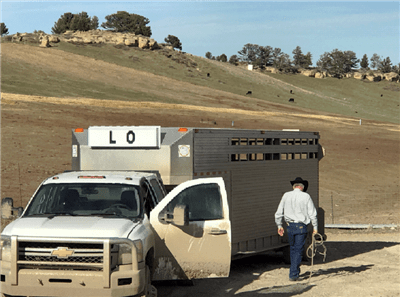Insurance is a big budget line item for most farmers and ranchers. So, it’s important to make sure your coverage is really going to work for you in the event of a disaster. Tom Holland, a farm and ranch agent for PayneWest Insurance out of Dillon, Montana says, “Lots of us can stand a $500, or $1000 loss but a $500,000 loss or $1,000,000 loss could be devastating.”
Your insurance policy doesn’t automatically change as your operation grows and changes, so an annual review is important to make sure your insurance is in line with your risk. Holland says, “We insist that people do an annual review at the ranch because I can see a new calving shed or a new addition to the house that they may not have thought about as changing
Here are ten risks that tend to change year to year on farms and ranches and you will want to make sure you have considered with your agent:
1. Changes to Buildings: Updating the value of the buildings and the out-buildings on the ranch. Did you remodel the bathroom or the kitchen? Have you built a new equipment shed or a new calving shed?
2. Equipment: Look over the policy and make sure the right item is listed. If you have traded a tractor or baler, make sure the correct and current model is listed on your policy.
3. Automobiles: Review the automobiles listed on the ranch including any ATV’s and UTV’s. If you don’t have on and off coverage liability coverage you may not be covered on your county roads, your neighbors or on the BLM.
4. Employees: Have you hired or lost any help? Do you have the right amount of worker’s compensation coverage? Have you accounted for seasonal or temporary labor?
5. Animals: Did you buy or trade any horses or livestock of significant value? If you purchased any semen of value that hasn’t been used, is that insured?
6. Pasture Policy: If your cattle are in a high danger zone area and especially if you are surrounded by state or federal land, a pasture policy will protect you in the event of a disaster when the state might shut down the roads and you would not be able to get in to protect your herd.
7. Ownership: Have you changed the entity ownership or company structure this year, perhaps you have finally shifted ownership to the next generation? Any person who has ownership of the operation has liability.
8. Life Insurance: Has your family situation changed? If you have had kids or gotten married, you may want to add some life insurance to protect your family.
9. Hay in the open: Is it covered? Is it the right tonnage and the right value?
10. Check for new endorsements: Insurance companies are constantly updating their enhancements and endorsements to meet the changing needs of the farmer or rancher. One good example is insurance for tractor cab glass that can be very expensive if broken and may not be included in your policy.
While budgets are perpetually tight, Holland understands that operators have to make very calculated decisions when it comes to insurance. His advice: “Don’t cut corners on things that are vital to your operation. The hay in the open or that grain in the bin is your cash flow.
If you are interested in speaking with agents who specialize in farm and ranch, visit Mutual of Enumclaw to find an agent near you or contact Tom Holland directly at 406-683-6882 or tholland@paynewest.com.
Sponsored by Mutual of Enumclaw


